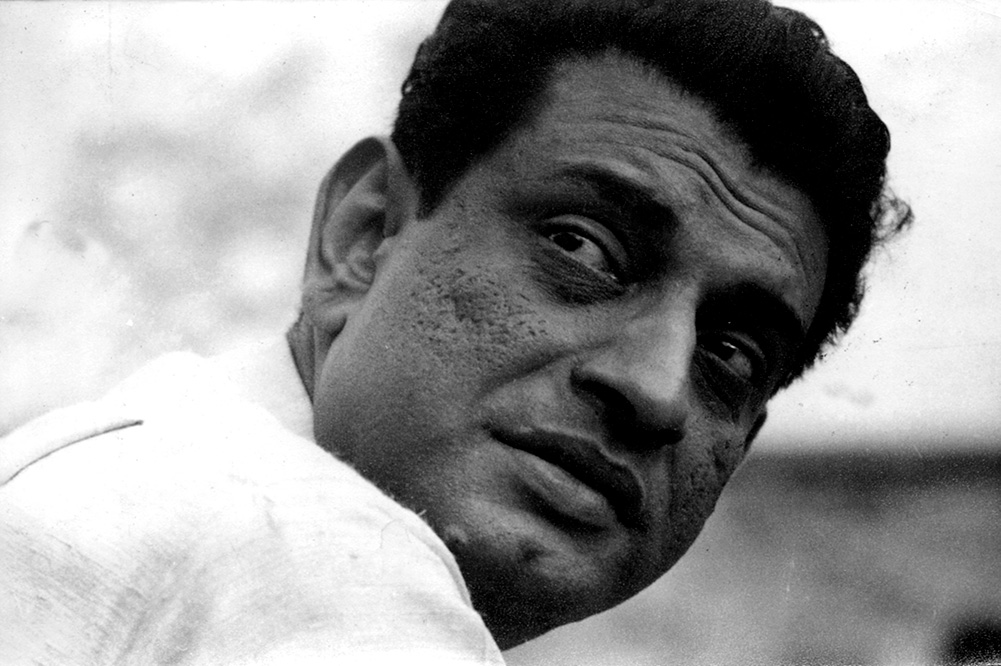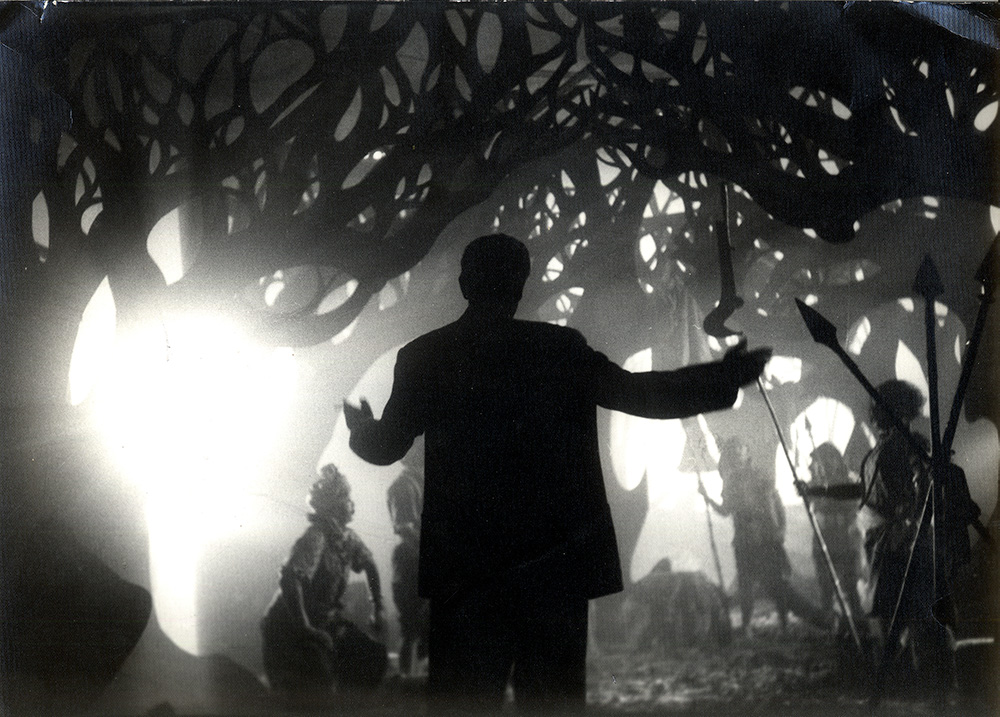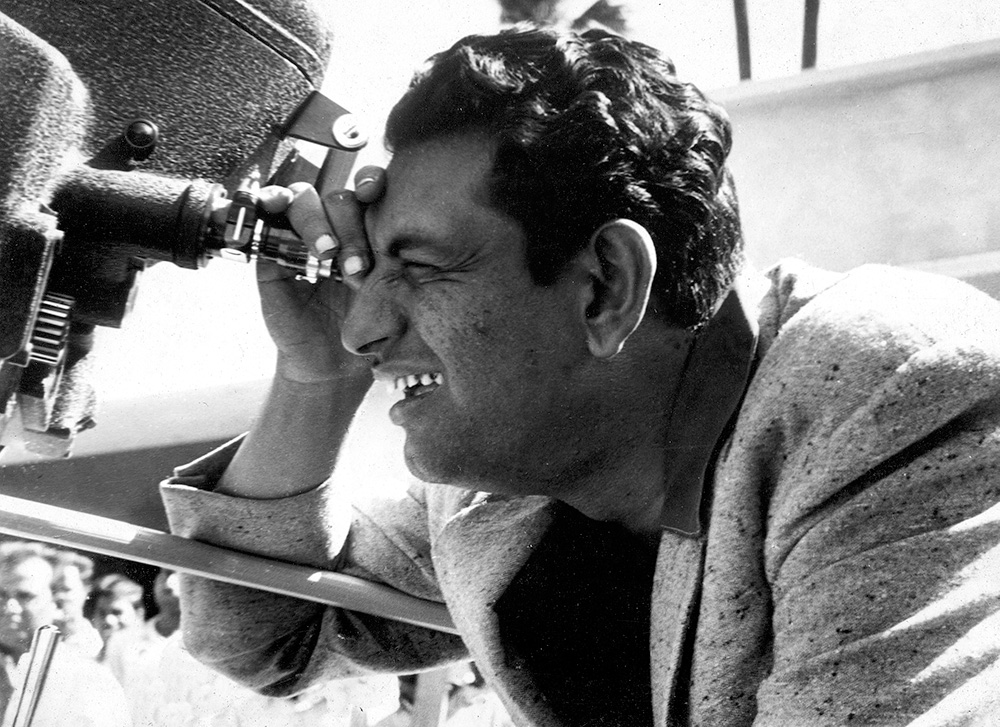
"On the 7th of August 1941, in the city of Calcutta, a man died," begins Satyajit Ray’s 1961 documentary Rabindranath Tagore (1961). The eponymous Bengali polymath—the "man" in question—was the first non-European to win the Nobel Prize in Literature and assumes a God-like spectre over the cultural conscience of Bengalis all over the world. As does Ray—the first Indian to ever win an Honorary Academy Award, in 1992. He directed 36 films, authored books, scored music, sketched, invented fonts, and wrote essays on film criticism, among other things. Lesser known among the many hats he donned, Ray was also a documentary filmmaker, having directed five documentary films that, though hard to access, give us a glimpse into the filmmaker’s penchant for storytelling, that shines across genres and styles.
It is only fitting that Ray, who would’ve turned 100 this year, was asked by the Films Division of India to direct the documentary on Tagore to commemorate the poet’s birth centenary. The ensuing film, a meditation upon one cultural giant by another, played at the 1961 Locarno International Film Festival and won a Golden Sail.
Ray’s father, the author Sukumar Ray, was a close associate of Tagore’s, and they were both strong advocates of the Brahmo Samaj, the monotheistic reformist movement within Hinduism. Satyajit Ray attended Tagore’s Visva Bharati University for his graduate studies in fine arts. This is where he was tutored by the greats of the Bengal Renaissance—artists like Nandalal Bose and Benode Behari Mukherjee (subject of his later documentary Inner Eye)—both of whom had a great impact on Ray’s sense of aesthetics and his artistic choices. Rabindranath Tagore, therefore, is as much an attempt to contain Tagore’s infinite influence within 52 minutes as it is a tribute.
The film, in black and white, begins with footage from Tagore’s funeral, where thousands of mourners spill onto the streets of Calcutta. It is said that Bengalis climbed onto his hearse and tugged at his long flowy beard so that they could keep strands of his hair as memorabilia. The film then retraces its steps to introduce the audience first to the city, still under British rule when Tagore was born, and then to the illustrious Tagore family. Narrating in his signature baritone, Ray uses the documentary to walk the audience through Tagore’s childhood, his early works, and consequent Nobel win and close relationships with the likes of W.B. Yeats, Gandhi and Albert Einstein. Ray peppers his fairly linear narrative with renditions of numerous Tagore songs and a staging of his early dance drama, Valmiki Pratibha, where Tagore (much like Ray himself) merged features of Western classical music with the Indian raga-based musical traditions.
To make up for the lack of archival footage of Tagore’s life, Ray uses actors to recreate scenes from the bard's life, thereby creating a hybrid aesthetic that merges the fictional and the real. The documentary is at once a retelling of facts and an adaptation that makes slight departures from the formality of the documentary style. Interestingly enough, given the fact that Tagore published more than 50 volumes of poetry, Ray doesn’t include any poems in the film. In an interview with W. Andrew Robinson, the author of the biography Satyajit Ray: The Inner Eye, Ray mentioned that he wasn’t pleased with the existing translations of Tagore’s poems and believed that using them would do injustice to the greatness of the works.

Instead, Ray concentrates on building Tagore’s legacy as a social thinker and reformer, and uses the documentary to remind the audiences of his foresight when Tagore authored Civilization in Crisis just before he passed away in 1941. Tagore wrote, "As I look around, I see the crumbling ruins of a proud civilisation strewn like a vast heap of futility. And yet I shall not commit the grievous sin of losing faith in Man." It is a sentiment that is shared by Ray through each of his films, as he champions the desires and ambitions of his protagonists often set within a larger hostile society that inhibits these desires. By choosing to not focus on Tagore’s fairly ubiquitous individual bodies of work, Ray uses the documentary to remind the audience of the radical, secular core of his philosophy—something that can easily get lost amidst the tomes he left behind. What emerges is a portrait of Tagore as not only a poet and artist, but a political philosopher, a figure whose ways of thinking about the place of the human being in modern society not only influences a range of pre-Partition Indian nationalists in their struggle for India’s freedom from British rule, but also sows the seeds of a nascent indigenous liberalism that straddles the mystical and political, and attempts reconciliation between the individual and collective.
Sandwiched between the first two films of his famous Calcutta trilogy—Pratidwandi (The Adversary, 1970) and Seemabaddha (Company Limited, 1971), Ray made perhaps the most controversial film of his career. Sikkim (1971), filmed in color, was commissioned and produced by the then-king of the kingdom of Sikkim, Palden Thondup Namgyal, and his American wife, Hope Cooke, in a bid to popularize their beautiful and small Himalayan kingdom.
Through his own narration, and extensive long shots of the snow-clad mountain range and the luscious flora of the region, Ray metaphorized Namgyal’s kingdom and its people—mighty like the mountains, yet joyful and delicate like mountain orchids and rhododendrons, emerging out of the mist and insisting upon their sovereign existence. The second part of the film focuses on the festivities surrounding the king’s birthday, where guests eat and make merry at a large banquet. Ray juxtaposed these images of excess with shots of poorer everyday citizens of Sikkim engaged in farming on mountain slopes and working in quarries—noting, however, that the state had a much higher rate of literacy than any of the adjoining states. "The end is also very lively, very optimistic, with children, happy, laughing, smoking, singing. The whole thing builds up into a paean of praise for the place," Ray told his biographer, W. Andrew Robinson.
Given Ray’s deeply nuanced filmmaking, one does wonder if shots of smiling tribal children, completely divorced from the political turmoil of Sikkim, are slightly reductive. In his poetic representation of the land, Ray’s critical work seems to have lost some of its teeth in Sikkim. Curiously enough, the king was deeply dissatisfied with the film and suggested a few cuts. Robinson adds, "[Ray] was compelled to make about 40 percent of the film into something ‘bureaucratic with statistical information’...He remembers one scene in particular that got cut out... It showed a party with a senior bureaucrat shot in a not very flattering way. Hope Cooke kept saying, ‘That’s wicked! That’s wicked!’ and Ray knew that this was one part of his film that would never make it to the finished version." It never did.
When the nation state of Sikkim acceded to become a part of the Indian republic, the Indian government promptly banned the chopped-up film for its depiction of Sikkim as a sovereign kingdom. Barring a private screening for the royal family, the film was not released until 2008. It was soon banned again. "It’s not a very logical reason for banning the film because, after all, it shows Sikkim at a certain point in history. It doesn’t claim to show Sikkim of today," Ray told Robinson.
After Sikkim, Ray made three more documentaries—all shorter biographies. In 1972, he directed Inner Eye, on the life and the works of his teacher, Benode Behari Mukherjee. A portrait of the artist, again narrated by Ray, is drawn with utmost awe and respect. Ray focuses on the ingenuity of Mukherjee’s art and celebrates the genius behind the extensive frescoes that adorn the walls of the Visva Bharati University buildings—living testimonies to Mukherjee’s brilliance that seamlessly blended western and eastern artistic traditions. The artist, in an interview with his beloved student, remarks, "...whether it’s Byzantine, or Jain, or Pata—a historian may differentiate between these forms, but how does it matter to an artist like you or me? If you put a folk figure next to a Jain one, whose father is going to scold you?" The celebration of Mukherjee’s radical practice forms the spine of the 20-minute documentary—so much so that Ray barely mentions how the artist progressively lost his eyesight through his lifetime, until he could no longer see in his last years. Instead, Ray focussed on the art Mukherjee continued to create through his "inner eye."

In 1976, the Indian state of Tamil Nadu asked Ray to make a documentary on Balasaraswati whom he considered the greatest Bharatanatyam dancer ever. The eponymously titled 30-minute documentary, Bala, is again narrated by Ray and starts off with a short introduction of the basic theories of the classical Indian dance form. As the dancer prepares to perform, Ray documents the intense discipline and practice that forms the basis for her near-divine performances. Ray also speaks to dance critics and other dancers (including the illustrious Uday Shankar), who discuss Bala’s talent and dedication to her art. Following a brief recap of her career, spanning over decades and across continents, the documentary captures two of her performances—one by the sea and one on stage. In the former creative decision, which has been panned by many critics, Ray filmed Bala on a beach against the backdrop of crashing waves. She performs as Yashoda, the mother of Lord Krishna, imploring her child to come home. The sea breeze tosses the dancer’s sari and disturbs the geometric perfection that usually defines her movements, and muffles the words of the song she is dancing to. Ray’s decision to take the dancer outside of the formal rigidity of the stage seemed to have backfired and the audience is left with a somewhat clumsy and distracted dancer trying to dance and manage her sari at the same time.
What we apparently lose in watching Bala dance on the seashore is made up for by the long on-stage performance. Ray’s artistic vision takes a backseat as Bala fills the screen with her gait and mastery. For the uninitiated, the performance might seem a bit long, but for enthusiasts of Bharatanatyam and connoisseurs of Indian dance, the documentary is a record of one of the greatest classical dancers the country has ever produced.
Sukumar Ray (1987) was Ray’s tribute to his father, and his final documentary. Narrated this time by his long-time collaborator, actor Soumitra Chatterjee, this film follows a similar trajectory as it introduces audiences to the Ray family before embarking on an overview of the brilliance of Sukumar Ray, who was an author, a photographer, an illustrator, a poet, and a social reformer. He also ran the family printing business, which introduced many revolutionary processes within the industry in India. As with his other documentaries, Ray improvises and makes up for the lack of archival footage by introducing fictional elements as he recreates parts of Sukumar Ray’s children’s satire Lakshmaner Shaktishel, with Chatterjee in the lead. Ray also casts thespian Utpal Dutt to play the Sanskrit teacher from Sukumar Ray’s "nonsense" play Jhala Pala. As in the cases of Tagore, Balasaraswati, and Benode Behari Mukherjee, Ray introduces his father through his works and does not get caught up in sentimentalities that can often overshadow the brilliance of the protagonist.
To compartmentalize Satyajit Ray’s works—into documentaries, narrative films, art, music, books, commercial graphic design—limits the reading of his oeuvre. His works, all of them, are essentially vessels for his many talents that come together to form a cohesive story that gets told in a way that is uniquely his. Be it the first uses of fusion music in Indian film, the use of artistic bespoke fonts for credit titles, or casting well-known actors in documentaries, all of Ray’s works fit into an arc of unique artistic choices that bends towards a body of work that truly represents the society and age that produced them. His documentaries, all in urgent need of restoration, carry elements of fiction, just as his fiction films tell of real, factual social events—all adding up to a long lineage of radical storytelling that he both continues and departs from. It is this hybridity of techniques, while maintaining a singular and consistent empathetic core, that marks Ray’s auteurship.
Bedatri D. Choudhury is the Managing Editor of Documentary Magazine. Born and raised in India, she lives in New York City.




